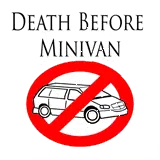Why 9-9-9 is not regressive
I’m not normally in the business of making arguments for politicians, but Herman Cain’s 9-9-9 plan is getting some unfair criticism, and more than a few people are mischaracterizing the real tax burden Americans face. Fore example, on Meet the Press this weekend, David Gregory went after Cain, alleging that some people would pay more under Herman Cain’s 9-9-9 plan. Other have argued that the plan is a regressive tax.
The core argument is that lower income Americans (the 47% who pay no income tax today) would end up paying more in taxes, and the taxes on goods and services would unfairly be placed on them. The logic being that lower income Americans have less disposable income, and therefore have less choice in whether and what to buy. A tax on goods would therefore be borne by these currently untaxed Americans.
Although Cain hinted at it, he fails to make the most compelling counter argument to the regressive tax charge: All Americans are already paying indirect taxes through the taxes embedded in the price of goods and services they buy. To be fair, Cain mentioned embedded taxes On Meet the Press, but only to argue that prices will drop under his plan (a fair point, as well). He has not yet argued that the tax is not regressive because the high corporate tax rate is already embedded in the cost of goods and services.
For example, if a grocery store sells a loaf of bread for $3, embedded in that price, is the following costs:
- farming and transporting the wheat, eggs and milk used to make the bread;
- milling and re-transporting the wheat to make flour;
- baking and packaging the bread;
- warehousing and transporting the bread to the store; and
- stocking the shelves, paying the cashier and the cart guy, and the night janitor, etc., who all work at the store.
At every level, from farmer to mill to baker to wholesaler to store, the relevant business has to pay a 7.65% payroll tax on all employee wages, plus a 35% tax on the business’s profits. As many conservatives have pointed out, those taxes are only paid by the companies in a technical sense. In a real sense, they are passed on to the consumer in the form of higher prices.
If it costs $1.00 to produce the bread, the baker will sell it to the wholesaler for about $1.30, making a 30% margin. That margin covers the profit the baker needs to make, net of taxes. At a 35% tax rate, the baker would pay 10.5 cents on each loaf of bread, meaning the baker nets a profit of $.195 per loaf. (If the taxes are reduced from 35% to 9%, the baker could sell the same loaf for $1.21 and make the same profit after taxes–this does not count the cost of employer paid employment taxes.)
That tax effect is multiplied at each level of exchange. The baker already takes on the farmer’s and mill’s taxes and grosses up his price to include those costs in his own profit margin. So each merchant’s margin includes some multiplier of the taxes already paid at each prior level. If we assume a profit margin of about 20% for the store, 10% for the wholesaler, 30% for the baker, and 10% for the mill and the farmer, the embedded taxes will add up to over $1.00. (Even if you assume an across the board 10% margin, $.62 of the $3 is due to taxing of profits at each level.) Put another way, if the corporate tax rate were 0%, bread would cost about $1 less.
While it may be true that some Americans will pay more taxes directly to the U.S. Treasury, the critics who make this argument are not considering the indirect taxes those Americans are already paying. The proper counter argument for Mr. Cain is that Americans already pay consumption tax, they just don’t realize it. Under 9-9-9, Americans would have a more transparent view into their real tax burden.
Of course, as the Wall Street Journal points out, the real problem with 9-9-9 is that it will soon become 15-15-15.


